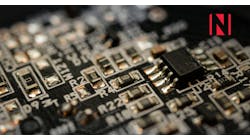Q&A with Vick Aggarwala, President and CEO, Supreme Components International
Operating within the electronics distribution industry is a global and nuanced endeavor, as the intricacies of doing business in one region differ from another. Supply Chain Connect sat down with Vick Aggarwala, President and CEO of Supreme Components International, to understand the differences between the Asian Pacific market and the North American market.
This interview has been edited and formatted for clarity.
Can you please introduce yourself to our audience, Mr. Aggarwala? Tell us about your experience and history in the industry.
I am Vick Aggarwala, President and CEO of Supreme Components International. I am an Indian-born Canadian citizen, Singapore PR and have worked and lived in India, Europe (Germany), North America (Canada) and now in Asia Pacific (Singapore). I have over 49 years of industry experience in semiconductor manufacturing and distribution.
I am the first North American to bring distribution into Asia Pacific, which I did way back in 1991 through Future Electronics. I also brought Nu Horizons into Asia Pacific in 2002.
China, in the early ’90s, was not in the equation. It started opening up only after Hong Kong was returned to China in 1997. Subsequently, China became the factory of the world.
Who is Supreme Components International? Can you tell us about your company, as well as the industries and markets you serve?
Supreme Components International (SCI) is a high-tech franchised broad-line electronic components, LED lighting and IOT/AI distributor from Singapore. SCI has 16 locations in 12 countries with three distribution centers located in Singapore, India and Japan. SCI has more than 130 official franchised lines and, in addition, has access to more than 100 other component manufacturers directly.
SCI mainly caters to industrial, automotive, telecom and medical industries and provides world-class services to 55 markets globally in Asia, Europe and North America. SCI is a multiple award-winning Singapore brand.
What are some differences between the Asian market and the North American market when it comes to electronic components? What should stakeholders looking to operate in Asia understand?
Asia Pacific is broadly divided as North Asia (Japan and Korea), Greater China (Mainland China, Taiwan and Hong Kong), Southeast Asia (Singapore, Malaysia, Thailand, Indonesia, Philippines and Vietnam), India and Australia/New Zealand.
Each region is unique in its own way. Japan is Japan, Korea is Korea, China is China, India is India, and so on. For instance, in Japan, the Kouza system is still very pertinent and customer-supplier relationships are very tight. One needs to understand the Asian culture and its uniqueness. It would be important to have a local person with you during business activities who could be helping.
Each country possesses its own nuances in their ways of doing business. One must do thorough research in terms of logistics, duties and taxes for each country. For example, electro-mechanical components have import duties in Indonesia, Thailand and India.
One of the differences between the Asian market versus the North American market is that there is no rep model in Asia. Relationship-focused business in Asia is much more prevalent than deal-based business in North America. No verbal purchase orders are taken in Asia. Proforma invoices are given to suppliers and customers as PO acknowledgment.
Can you explain “N.C.N.T.” and who else plays a role—and the role they play—in this region?
Country of origin is being demanded by most customers. The term NCNT (Non-China Non-Taiwan) is becoming commonplace. Vietnam, Thailand, India, the Philippines and Malaysia are the main beneficiaries after the world began looking at China+1 or China+2 strategies. EMS/CEM (Contract Electronic Manufacturers) have a very strong presence, especially in these countries.
More companies are moving their design and manufacturing locations to Asia. For example, Malaysia with semiconductor assembly, Singapore and Malaysia with wafer fabrication, Vietnam and India with designing, and Vietnam, Indonesia, Malaysia, the Philippines and Thailand with EMS.
What are some of the challenges of working within the Asian market today? Do you see any potential challenges that may arise in the near future?
For parts originating from China, North American companies need to pay a 25% tariff on components. This is going to increase to 50% (or more) soon. With Trump expected to be reelected as the U.S. President, the challenges of doing business in Asia are expected to further grow.
Some other challenges include:
- Language barriers. Thailand, Vietnam, India, China and Japan possess major language barriers as English is not widely spoken.
- Local customs. Mannerisms are very important for closing business in each country.
- Business processes. There are some restrictions in terms of the movement of semiconductors and components, as well as the handling of materials (particularly when goods must be shipped out of duty-free processing bonded zones).
- Financial transactions. Payments and transactions in foreign currency can be burdensome.
Looking ahead, where do you see growth potential when it comes to the Asian market? What industry segments have great potential to be drivers going forward?
Asia is the world’s largest market for components and growing exponentially, leading in the electric vehicle, solar panel and AI markets. Southeast Asia and India will continue to expand. India offers undisputedly excellent growth potential now and in the future. Robotics, EV, IoT, 5G/6G and AI are the key industry segments that offer tremendous growth potential.
What does the future hold for Supreme Components?
My dream of Supreme Components International being recognized as one of the Top 50 Global Distributors was recently realized when Supply Chain Connect, this May, launched the 2024 Top 50 Global Distributors list at EDS in Las Vegas where SCI was ranked #47.
SCI’s vision is to be physically present in all major continents and to have a significant presence in the Americas. SCI is investing heavily in the digital/IT space and strengthening our engineering team further. SCI is obsessed with adding value at the “speed of thought” for its customers and suppliers worldwide through its dynamic and resourceful team.









